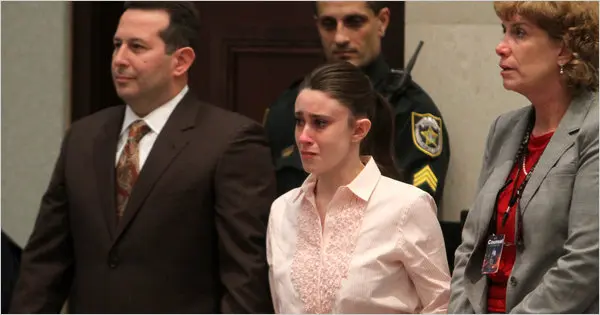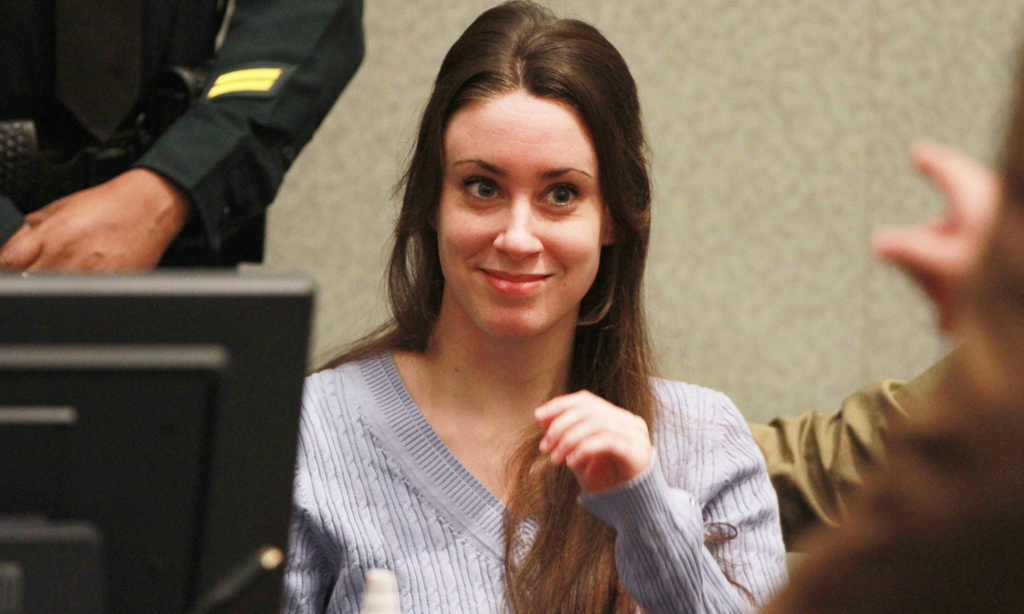
In a move that has left many Americans both shocked and intrigued, Casey Anthony has launched new social media channels on TikTok and Substack. Once infamous for her involvement in the tragic disappearance and death of her daughter, Caylee Anthony, Casey’s latest venture aims to serve as an advocacy platform—a new narrative for a story that still sparks intense debate across the country.
The Legacy of a Controversial Case
Casey Anthony’s name remains synonymous with one of the most infamous criminal cases in recent U.S. history. The disappearance and subsequent death of her daughter, Caylee Anthony, in 2008 gripped the nation. Casey was arrested amid a whirlwind of media frenzy, accusations, and contradictory statements. Although she was later acquitted of murder charges, the unresolved questions and lingering pain over Caylee’s death continue to fuel public debate.
For over a decade, news outlets, legal experts, and true crime enthusiasts have re-examined the case—its evidence, courtroom testimonies, and the roles played by Casey and her family. Now, as Casey steps into the digital spotlight once again, her actions are set to stir up further discussion and scrutiny.
Embracing Digital Platforms: TikTok and Substack
A New Social Media Strategy
Casey Anthony’s decision to join TikTok and Substack signals a bold shift in her approach to public engagement. With TikTok’s short, dynamic videos and Substack’s long-form storytelling capabilities, Casey now has a chance to connect directly with a broad, digitally-savvy audience. Unlike traditional media, these platforms allow her to bypass gatekeepers and present her perspective in her own words.
TikTok’s Appeal
TikTok has rapidly evolved into a cultural phenomenon. Initially known for viral dances and challenges, the platform now serves as a venue for personal storytelling, social commentary, and even political debates. Casey’s short videos aim to provide glimpses into her daily life, sharing reflections on her past, personal insights, and her vision of advocacy—using plain, accessible language that resonates with viewers.
Substack’s Depth
Substack, a rising platform for independent writers, offers Casey the space to craft detailed narratives. Here, she can delve deeper into her version of events, explore legal intricacies, and discuss issues such as public perception and media bias. This combination of platforms demonstrates her attempt to control the narrative and redefine her legacy.
Advocacy or a New Chapter?
Reclaiming the Narrative
At the heart of Casey’s social media rebranding is her claim to advocate for Caylee. Through her digital content, she seeks to offer an alternative perspective on what happened in 2008. Supporters argue that this could be a bid for redemption—a way to finally address unanswered questions and offer closure to a case that still haunts many.
Critics, however, view this move with skepticism. For them, Casey’s history and the tragic loss of Caylee make her advocacy seem like a calculated effort to reshape public opinion rather than genuine remorse. Nevertheless, the platforms provide her a rare opportunity to speak directly to millions, bypassing traditional news channels that once painted her as a villain.
Breaking Down Complex Concepts
For many in the USA, the idea of a controversial figure like Casey Anthony taking on an advocacy role is difficult to grasp. Yet, in today’s digital age, even the most polarizing personalities can reinvent themselves. Casey’s videos and posts aim to simplify the complex legal and emotional facets of her case, offering straightforward explanations and personal anecdotes to engage a diverse audience.

Public Reaction and Media Frenzy
A Nation Divided
Casey Anthony’s social media debut has reignited debates across the nation. While some viewers are curious to hear her version of the story, many remain outraged by her past actions. Social media platforms are abuzz with comments—ranging from defensive support to harsh criticism—illustrating the deep divisions that the case continues to evoke.
Legal experts and true crime bloggers have weighed in on the implications of her digital rebranding. Some see it as a potential turning point in how high-profile criminal cases are discussed, while others warn that it might further complicate an already painful legacy.
Traditional Media vs. Digital Platforms
For decades, traditional news outlets were the primary source of information about the Caylee Anthony case. Now, however, digital platforms have democratized the narrative. Casey’s direct engagement with the public forces journalists to re-evaluate how they cover such cases, challenging them to balance objective reporting with the sensationalism that once dominated the story.
Timeline of the Casey Anthony Case
Casey Anthony Timeline
Caylee Marie Anthony is born.
Caylee is last seen alive as Casey Anthony leaves her parents’ home in Orlando, Florida.
Cindy Anthony calls 911 reporting that Caylee has been missing for 31 days, mentioning a disturbing odor from Casey’s car.
Casey Anthony is arrested after providing contradictory statements, including claims that a babysitter kidnapped Caylee.
A grand jury indicts Casey on charges of first-degree murder, aggravated child abuse, and aggravated manslaughter, plus multiple counts of lying to law enforcement.
Caylee’s skeletal remains are discovered in a wooded area near the Anthony family home.
The trial begins in Orlando. Prosecutors allege that Casey used chloroform and duct tape to kill her daughter, while the defense argues that Caylee drowned in the family pool.
The jury acquits Casey of major charges but convicts her on four counts of providing false information to law enforcement.
Casey Anthony is released from jail, credited for time served.
Casey maintains a low profile while occasionally resurfacing in media and true crime discussions.
Embracing digital media, Casey launches TikTok and Substack channels to share her perspective and advocate for her daughter, sparking new debates.
This timeline not only charts the tragic events of the past but also highlights the evolving narrative that continues to shape public perception today.
Expert Opinions and Case Studies
Shifting Paradigms in Crime Reporting
Legal and media analysts note that Casey Anthony’s digital rebranding exemplifies the changing nature of crime reporting. Traditionally, criminal cases were confined to television and newspapers. Today, direct communication via social media allows individuals to bypass traditional channels, altering how stories are told and perceived.
The Psychology Behind Redemption
Psychologists explain that the human need for narrative closure drives many to seek redemption after trauma or scandal. For Casey, rebranding herself on digital platforms may be an attempt to control her narrative and achieve a sense of closure—both for herself and for a public that has long demanded answers about Caylee’s tragic death.
Conclusion: A New Chapter in a Troubled Saga
Casey Anthony’s entry into TikTok and Substack represents more than just a personal rebranding effort—it symbolizes the broader evolution in how high-profile criminal cases are revisited and interpreted in the digital age. With a mix of advocacy, personal narrative, and direct public engagement, she seeks to challenge the established narrative that has defined her for over a decade.
For many Americans, the legacy of Caylee Anthony remains a painful reminder of unresolved questions and deep-seated emotions. As Casey embarks on this new digital journey, the nation will be watching closely to see if this rebranding will alter perceptions or simply add another layer to an already complex story.
FAQs: Your Questions Answered
Q: Where is Casey Anthony now?
A: She resides in Florida, working as a private investigator.
Q: How did Caylee Anthony die?
A: The cause remains officially “undetermined,” though homicide was suspected.
Q: What’s the purpose of Casey’s TikTok and Substack?
A: She claims to advocate for “wrongfully accused parents” and share “her truth.”
Q: Has Casey apologized for lying to police?
A: No. She called the lies “a coping mechanism” during a 2022 documentary.
Q: How has the public reacted to her new platforms?
A: Reactions are polarized, with many accusing her of exploiting Caylee’s memory.

1 thought on “Casey Anthony’s Bold New Move: TikTok & Substack Sparks Outrage and Curiosity”